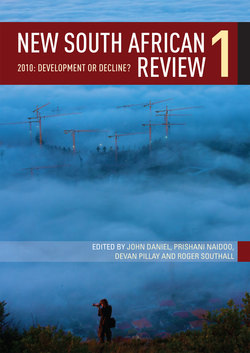Читать книгу New South African Review 1 - Anthony Butler - Страница 14
The crisis in education
ОглавлениеThere is a broad consensus that South Africa’s public educational system is simply not working and that this adversely effects the supply of skills needed by the economy (Bloch 2009). Despite a massive increase in expenditure on education since 1994 (so that, today, the level of public expenditure on education matches if not exceeds that of leading industrialised states),7 the results remain dismal. The pass rate for final year at high school has dropped for five consecutive years, falling from 73.3 per cent in 2003 to 60.62 per cent in 2009 (SAIRR 2008/09: 420; Serrao, 2010) and a large percentage of schools lack adequate staffing, facilities and equipment.8 The entry of insufficiently prepared students into universities and other institutions of higher education has led to a dismally low completion rate (only 15 per cent of students who entered higher education in 2002 graduated in the next five years). The performance of the country’s students in key areas such as mathematics and the sciences is particularly poor: whereas only 47 per cent of first year students entering university in 2009 were found to be ‘academically literate’, just 25 per cent were found to be ‘quantitatively literate’, and a mere 7 per cent were found to be proficient in maths (SAIRR 2008–09: 368). Although significant steps have been taken to address racial inequalities, educational achievement continues to reflect the apartheid racial hierarchy, with students from minority racial communities (notably whites and Indians) regularly outperforming coloureds and Africans in key areas such as engineering and the physical sciences (see Lewins below). Not surprisingly, the education deficit translates into a lack of engineers, technicians and other skilled personnel, with employers consistently complaining about the educational levels of many of those who have successfully graduated from the universities (Benjamin 2010).
Perhaps even more alarming is the high dropout rate from schools which reflects the dynamics of class as well as race. As many as 58 per cent of children who entered the school system in 1998 had dropped out by the time that their fellows had reached Grade 12 in which they took the matric exam in 2009; overwhelmingly, the majority of these will be Africans who will in all probability face a life of unemployment, Meanwhile, parents with money are increasingly turning to private education. For all that the government is strongly committed to addressing backlogs and poor outcomes, its capacity to do so appears limited. Not least of its problems, according to informed commentators, is a demoralised and ill-disciplined teaching profession (notably in schools serving poor black communities), and the overwhelming determination of the South African Democratic Teachers’ Union, the largest teacher trade union, to protect teacher interests at the expense of a more rounded commitment to the educational system.
